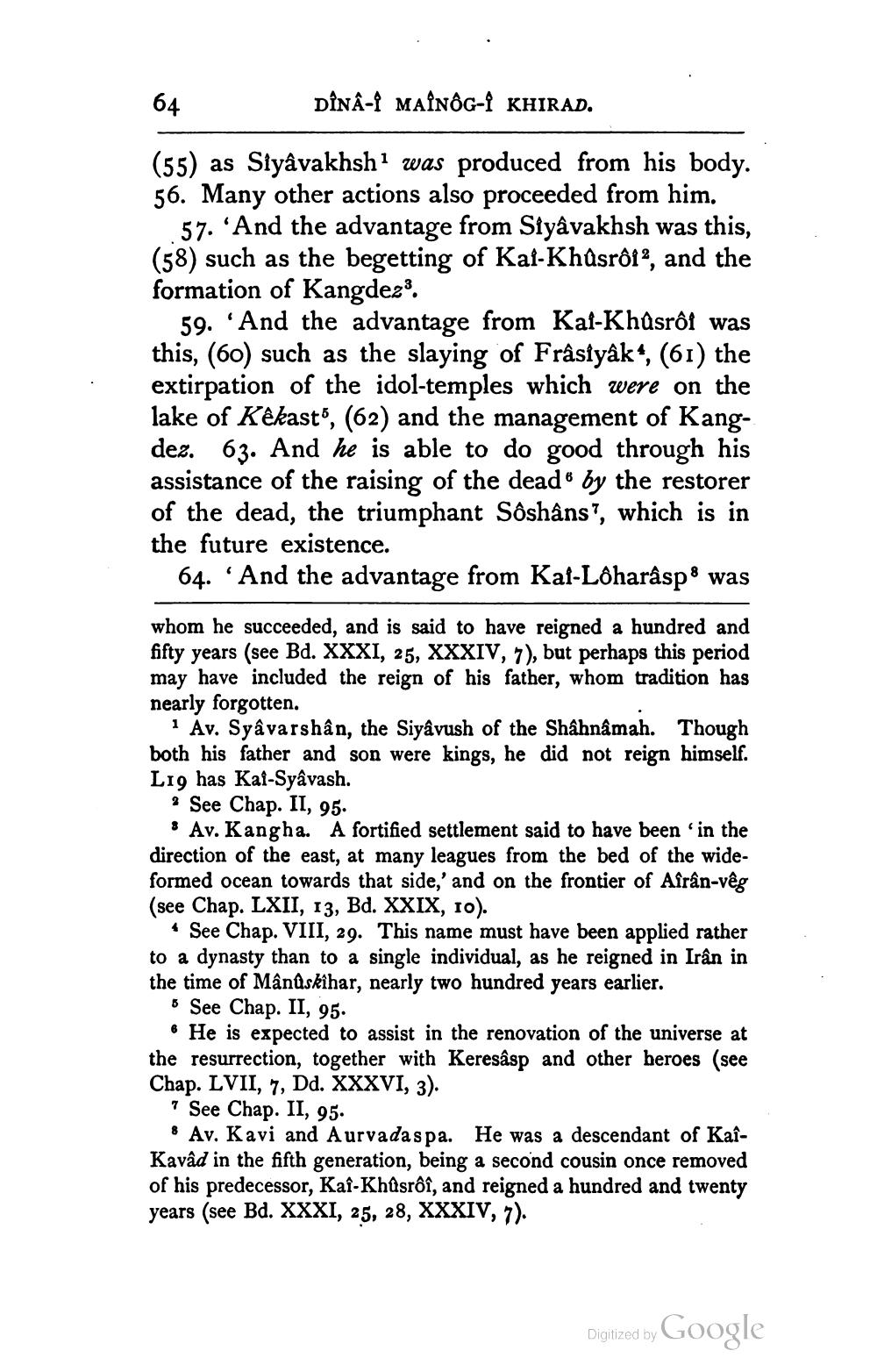________________
64
DÎNA-I MAÎNÔG-KHIRAD.
(55) as Siyâvakhsh was produced from his body. 56. Many other actions also proceeded from him.
57. 'And the advantage from Siyavakhsh was this, (58) such as the begetting of Kal-Khúsrðis, and the formation of Kangde23.
59. “And the advantage from Kaf-Khasrôi was this, (60) such as the slaying of Frâsiyâk, (61) the extirpation of the idol-temples which were on the lake of Kêkast", (62) and the management of Kangdez. 63. And he is able to do good through his assistance of the raising of the dead by the restorer of the dead, the triumphant Sôshậns?, which is in the future existence.
64. 'And the advantage from Kaf-Lôharâsp was
whom he succeeded, and is said to have reigned a hundred and fifty years (see Bd. XXXI. 25. XXXIV. 7), but perhaps this period may have included the reign of his father, whom tradition has nearly forgotten.
1 Av. Syâvarshân, the Siyavush of the Shâhnâmah. Though both his father and son were kings, he did not reign himself. L19 has Kai-Syavash.
? See Chap. II, 95.
• Av. Kangha. A fortified settlement said to have been in the direction of the east, at many leagues from the bed of the wideformed ocean towards that side,' and on the frontier of Afrân-vêg (see Chap. LXII, 13, Bd. XXIX, 10).
• See Chap. VIII, 29. This name must have been applied rather to a dynasty than to a single individual, as he reigned in Irân in the time of Mânûskihar, nearly two hundred years earlier.
o See Chap. II, 95.
6 He is expected to assist in the renovation of the universe at the resurrection, together with Keresâsp and other heroes (see Chap. LVII, 7, Dd. XXXVI, 3).
See Chap. II, 95. & Av. Kavi and Aurvadas pa. He was a descendant of KaîKavâd in the fifth generation, being a second cousin once removed of his predecessor, Kaî-Khûsrôî, and reigned a hundred and twenty years (see Bd. XXXI, 25, 28, XXXIV, 7).
Digitized by Google




